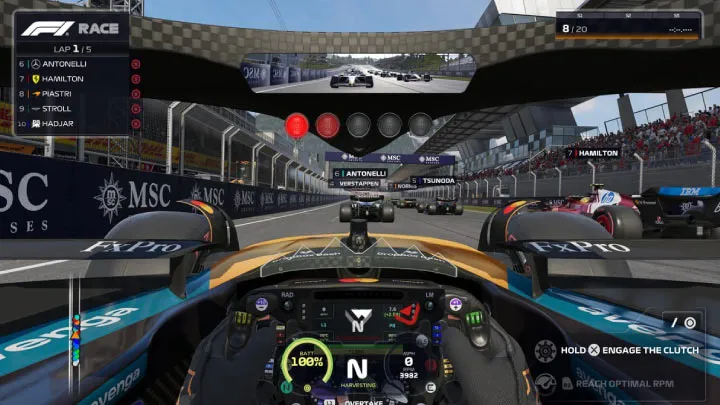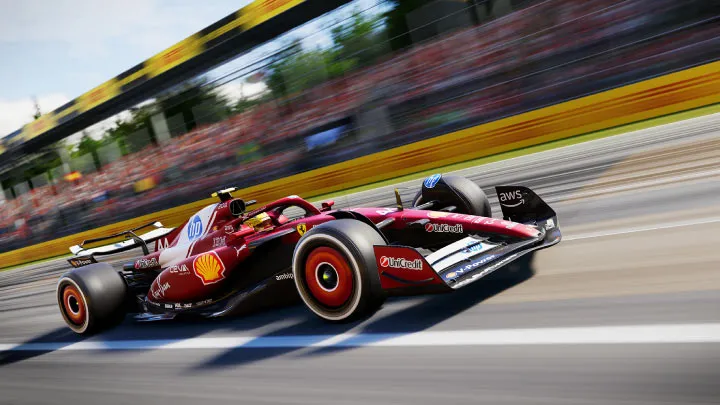F1 25 is the newest installment in the iconic Formula One racing series by EA Sports and Codemasters, offering the most immersive, realistic, and dynamic racing experience to date. With improved physics, advanced tire modeling, and authentic driver AI, F1 25 challenges players to think, adapt, and react like a true Formula One driver. Whether you are a beginner or a seasoned racer, mastering this game requires skill, strategy, and consistency. This comprehensive guide will teach you how to master every aspect of F1 25 from understanding the basics to perfecting your racing craft and conquering the championship.
Understanding the Basics of F1 25
Before jumping into the high-speed chaos of Formula One racing, you must first understand the fundamental mechanics of the game.
F1 25 offers multiple modes, including Career Mode, My Team, Grand Prix, and online multiplayer. Each mode presents unique challenges. Beginners should start with Grand Prix or Time Trial to get comfortable with the controls and car handling before moving to competitive modes.
The driving physics in F1 25 have been completely redesigned for more realism. Tires now heat and wear dynamically, weather conditions evolve naturally, and AI drivers adapt to your strategy. Learning how to handle your car in various conditions is the first step to success.
Setting Up Your Controls and Assists

Every player has a different style, and F1 25 allows deep customization of controls and assists.
Steering and Input Options
If you play on a controller, adjust steering sensitivity and throttle control to reduce oversteer. Wheel users should calibrate force feedback for realistic resistance. Small tweaks in steering linearity or brake saturation can make a huge difference.
Assists for Beginners
Use assists like traction control, ABS, and racing lines when starting. As you improve, gradually disable them to experience full control and faster lap times. Advanced players often race with no assists for maximum realism and precision.
Camera and HUD Setup
Experiment with camera angles such as cockpit, TV pod, or chase view to find what feels most natural. A clear HUD that displays vital data like ERS, fuel, and tire wear helps maintain focus during intense races.
Learning Track Fundamentals
Each track in F1 25 has its own personality, from the long straights of Monza to the tight corners of Monaco.
Track Study Techniques
Spend time in Time Trial mode to learn each circuit’s layout, braking zones, and apex points. Watching real F1 races or onboard replays can help visualize the best racing lines.
Cornering and Braking
In F1 25, cornering is all about precision. Brake early, downshift smoothly, and aim for a clean exit to maintain momentum. The brake bias setting can be adjusted to suit your driving style — a forward bias gives stability, while a rearward bias offers agility.
Memorizing Critical Zones
Every circuit has key areas where races are won or lost. Practice these high-risk sections until you can handle them instinctively under pressure.
Mastering Car Setup and Performance
Your car’s setup determines how it behaves on the track. A proper setup can cut seconds off your lap time.
Aerodynamics and Downforce
Balancing downforce is critical. High downforce increases grip in corners but reduces top speed. Low downforce improves straight-line performance but makes cornering harder. Adjust this based on the track type.
Suspension and Tires
Fine-tune suspension stiffness, camber angles, and toe settings to optimize handling. Softer setups help with bumpy circuits, while stiffer ones work best on smooth surfaces. Tire pressures affect grip and temperature — experiment to find the sweet spot.
Gear Ratios and Differential
Adjust gear ratios for acceleration and top-end performance. The differential controls how power is distributed to the rear wheels; a higher setting improves corner exits but can increase tire wear.
Racing Strategy and Tire Management
In F1 25, strategy is as important as raw speed. Managing your tires and fuel can determine whether you win or lose.
Tire Compounds and Wear
There are three main tire types: soft, medium, and hard. Softs are fastest but wear quickly, while hards last longer but offer less grip. Adjust your strategy based on race length and weather conditions.
Fuel and ERS Usage
Monitor your fuel mix and ERS deployment throughout the race. Using higher fuel modes for overtakes can give you a temporary boost, but be sure to switch back to conserve fuel for later laps.
Pit Stop Timing
Plan your pit stops carefully. Pitting too early might leave you vulnerable to late-race attacks, while staying out too long risks losing performance. Analyze track data and adapt your pit timing to evolving race conditions.
Handling Weather and Dynamic Conditions
F1 25 introduces advanced weather dynamics that can change the course of any race.
Racing in the Rain
Wet weather demands delicate control. Brake earlier, accelerate gently, and avoid sudden steering inputs to prevent spinning. Intermediate and full wet tires are designed for different levels of rainfall, so choose wisely.
Adapting to Changing Conditions

Weather can change mid-race, forcing strategic decisions. Be ready to switch tire compounds or alter fuel mix based on evolving conditions.
Safety Car and Virtual Safety Car
When a crash occurs, safety cars can alter race dynamics. Stay alert, maintain distance, and use these moments to pit strategically or save fuel.
Career Mode and My Team Tips
Career Mode and My Team are where F1 25 truly shines, combining management, progression, and on-track racing.
Starting Your Career
Choose a team that fits your skill level. New players should start with mid-tier teams to balance competitiveness with manageable pressure. Experienced players can challenge themselves with underdog teams.
Developing Your Car
Research and Development (R&D) is vital. Focus on aerodynamic, powertrain, and chassis upgrades that improve lap times. Balance your budget to ensure steady progression throughout the season.
Building a Winning Team
In My Team mode, managing staff and resources is as important as driving. Hire skilled engineers, manage sponsors, and invest in facilities to enhance performance.
Competing Online and in Multiplayer Modes
Online racing in F1 25 tests your skills against real players from around the world.
Choosing the Right Lobby
Start with beginner-friendly lobbies that allow assists. As you gain confidence, join ranked or no-assist lobbies for a true challenge.
Sportsmanship and Etiquette
Racing cleanly earns respect and improves matchmaking. Avoid reckless moves and always give space to opponents.
Communication and Teamwork
If you race in leagues, coordinate with your team for strategy and pit stop timing. Good communication often decides race outcomes.
Improving Racecraft and Overtaking
Racecraft is the art of positioning, timing, and anticipation.
Reading Your Opponents
Watch how rivals drive. Anticipate their braking points and weaknesses to plan your overtakes. Patience often leads to safer and cleaner passes.
Defensive Driving
Protect your position by managing your racing line. Don’t swerve erratically; instead, make subtle movements to block overtakes while staying within rules.
Advanced Overtaking Techniques
Use DRS zones and ERS boosts effectively. Overtake in sections where you can maintain control post-pass forcing errors from your rival is often more effective than aggressive dives.
Advanced Tips for Consistent Performance
Consistency separates great players from average ones.
Analyzing Telemetry and Replays
Review your race data to understand where you lose time. Compare lap-by-lap telemetry to identify braking and acceleration patterns.
Adapting to Patch Updates and Meta Changes
EA Sports frequently updates F1 25’s physics and AI. Stay informed and adjust your setups and strategies to remain competitive.
Maintaining Focus During Long Races
Mental endurance is vital for long races. Practice concentration techniques and maintain consistent lap times under pressure.
Conclusion
Mastering F1 25 takes dedication, practice, and strategic thinking. From understanding car setups and mastering each track to managing fuel, tires, and weather conditions, every detail contributes to victory. Whether you’re chasing your first podium or aiming to dominate the championship, this guide provides the foundation to race like a true Formula One professional. Remember consistency, precision, and adaptability are your greatest tools in F1 25.
Summary
Learn how to master F1 25 with expert tips on driving, setups, strategy, weather, and racing tactics to become a true Formula One champion.

















